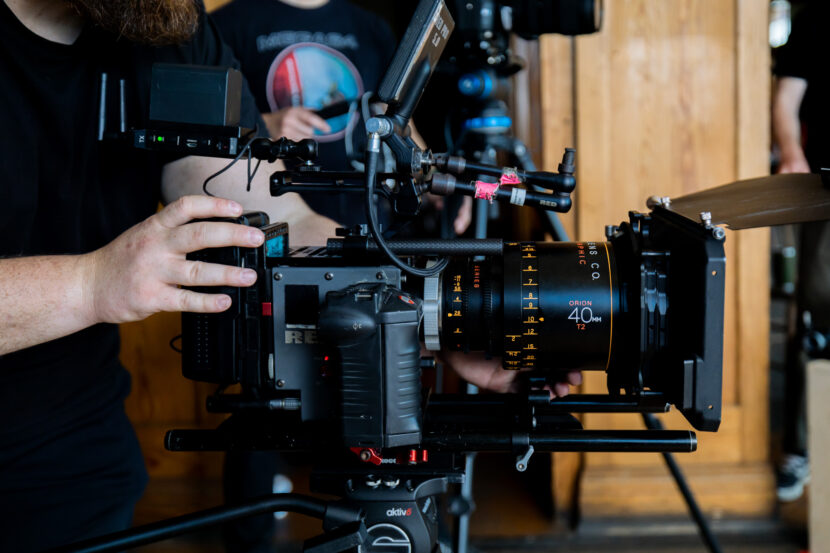The Creative Approach
In this article, we intend to explore the psychology of commercial video production, aka, “videos that work.” Videos that capture people’s imagination from the start are based upon a creative concept, not upon information. Of course, relaying information is crucial, but the role of a production house is to find a creative way to wrap your information with a compelling metaphor or approach that will engage emotions and create curiosity. There are infinite storytelling techniques available to creatives for commercial video production, but the skills lie in the ability to choose that particular approach that will compel an audience to continue watching to the end. The longer someone is emotionally engaged in a film, the more likely they will be to act. Plain facts and figures are lifeless. People buy and make decisions based upon how they feel. The marketing agent at a corporation will understand the information that needs to be conveyed, but it is the job of skilled production houses to translate information into inspiration.
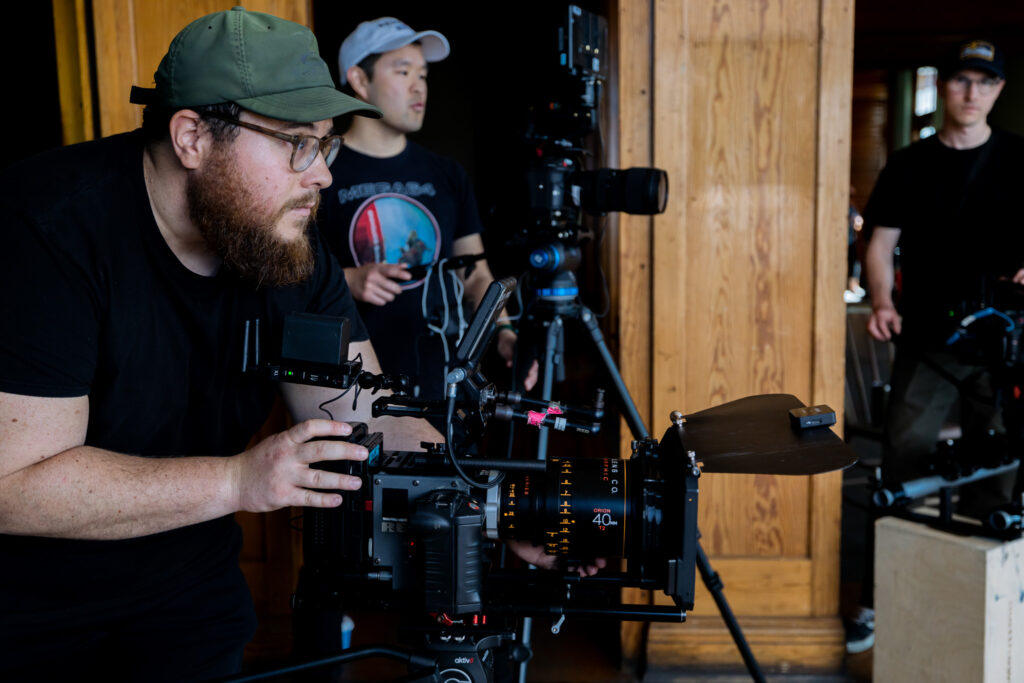
The Psychology of Camera Movement in Commercial Video
The second thing to consider in the psychology of commercial video production is movement: camera movement, people movement and background movement. Commercial videos have a short runway. The goal is to make the film as visually stimulating as possible to maintain the short attention spans of today’s viewers. Our eyes and minds are naturally drawn to movement. Therefore, it is part of the psychological strategy of a video production company to create movement in the film. This can be accomplished in several ways.
Gimbals
The most sophisticated method is to put the camera on a device that moves rather than hand holding the camera by hand. First, a Director of Photography (DP) may choose to put the camera in a gimbal system that allows them to move through the film location while maintaining a relatively smooth motion. In so doing, the DP may follow the subject that is moving or lead them (as the DP walks backwards) so the audience can see the different angels of the subject. Likewise, the camera motion could be very subtle as the it moves left, right, pushes in or pulls back. Whether the movement is substantial or subtle, it will add interest. One of the reasons a DP may choose a gimbal system is offer greater freedom of dynamic movement.

Dana Dolly
The second approach to camera movement is the Dana Dolly. In this circumstance, the camera is mounted to a wheeled truck that slides on rails of any length. The rails are mounted onto dolly stands that make sliding heavy cameras perfectly smooth. Dana Dollies can be used to achieve many different types of planned dynamic shots. For example, you sell beauty cream and you want a commercial. The camera starts wide in a bathroom and the dana dolly slide forward to reveal your product front and center. Such an approach generally requires more setup time and equipment, but the results are cinematic.

Dolly Cart on Tracks
The third and most cinematic approach to movement are the camera dolly carts that move on tracks or on a surface. This type of movement is one of the most sophisticated and exacting in the film industry. Setup time for such systems is demanding, requiring multiple grips to lay down track, a dolly grip to control movement and assistant camera professionals to assist all of the needs of the DP. For this setup, every action and movement has to be meticulously planned. The dolly is most affective when used in a high end production with a full crew and a substantial budget but the results are dazzling.

Jibs and Cranes
The fourth way to achieve movement is the jib and crane systems. What makes these systems stand out from the rest is that they can achieve large sweeping motions. The camera is mounted to an extension arm that can move freely within the x, y and z axis. Jibs and cranes can be of varying sizes, from 6-12 feet long to a crane that has the ability to take the camera 25 feet or higher in the air. Due to the high expense of cranes and operators, they typically are only used in high end productions. This is especially effective when showcasing large spaces.
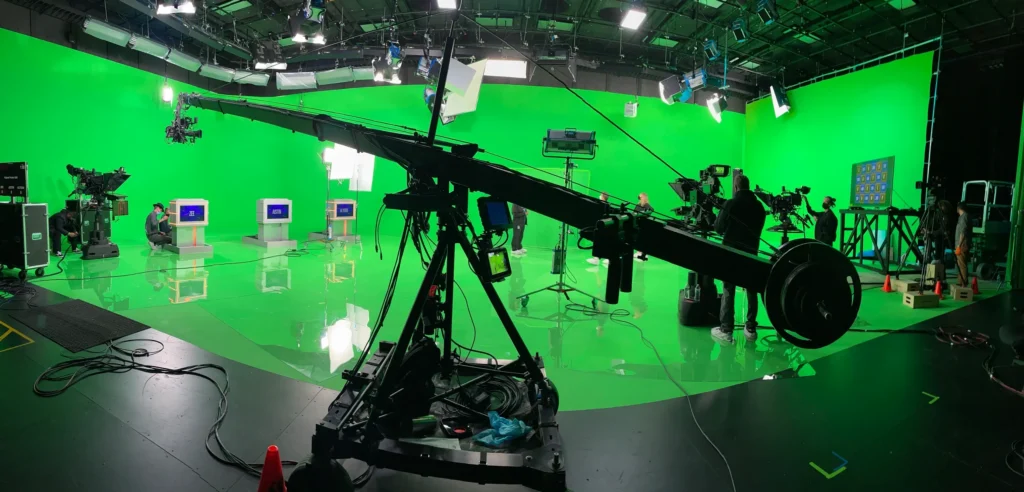
Drones
The final approach to movement and one that is creating new possibilities in the commercial video industry is aerial drones. Drones come in various sizes depending on whether it is carrying a heavy cinema camera or if the done contains its own camera. In most of the commercial video production industry, drones tend to have their own internal camera system and are remotely operated by a DP and a camera assistant on the ground. DJI produces a substantial portion of the aerial drones worldwide and and are often utilized by video production companies. One of the great advantages of drones is the savings of cost and time. A drone can film from 400 feet high, traverse across vast terrain and create breathtaking sweeping motions that could only be accomplished in the past by helicopters or planes. They can also be utilized inside large facilities such as manufacturing to film areas inaccessible to a traditional cinema camera.
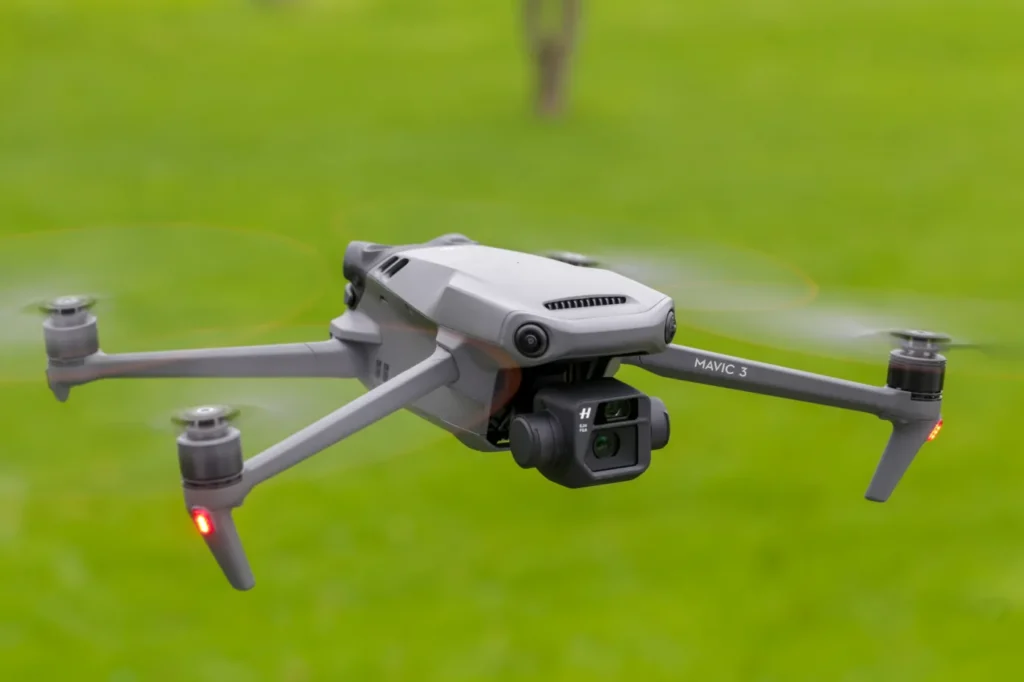
Blocking
Great directors also create movement in a film by blocking the action of people in the background or midground. The mind quickly becomes bored if there is no natural activity of people in a scene. People in real life tend to be in motion. The viewer loses interest with what is static in a video but is engaged when there is necessary motion. There are many times when the camera should not move at all so that people create the energy. It is beyond the scope of this article to explore all the techniques of blocking. Suffice it to say that the psychology of blocking people movement is crucial to any commercial video production.
The Psychology of Lighting in Commercial Video
Lighting is to film what color is to paintings. Without it, the picture will feel flat and lifeless. In video production, lighting comes from the vision of the director and the DP and is carried out by the Key Gaffer on set. You will know quickly on set whether you are dealing with videography or cinematography by the lack or presence of a lighting design. A DP truly paints the scene with his gaffer and grip equipment in order to achieve the desired look. It gives mood, emotion and shape to those on camera. In some cases lighting will be bright and poppy and in other cases it will be dark and somber, but both require an artistic approach to cinematic lighting. Through the skill of the DP and G&E crew, lighting can control where the eyes of the audience will focus.
As in all things related to film production, great lighting requires a larger crew, more time and more budget. That being the case, LED cinematic lighting fixtures are now much lighter, can emit large amounts of light and can produce any color desired. Most lights are controlled from a single tablet. Contrast this to 20 years ago when lights were huge, heavy, hot and required gels and gloves to give color to the scene.

The Psychology of Color in Commercial Video
There is a clear psychology to the choice of colors on any film set. In fact, light and color work in tandem with each other. This requires an art director and their crew that work days and weeks prior to a shoot to choose and coordinate the colors of everything and everyone on set. No color on a film production set is by accident. In the same way that lighting determines mood, so does color. Colors in clothing can convey power, status, socioeconomics, geographic location and so much more. From background to foreground, all the colors are selected to create the mood and feel of the scene.
An art director is not only responsible for color, but for every item on set, from furnishings to accessories, from what hangs on a wall to what is in the foreground. Again, such design communicates a vast amount of non-verbal information, profoundly affects how we feel and determines our level of engagement. Don’t underestimate the psychological impact art direction brings to video production.

Color grading a film is another crucial component to the psychology of cinematic video production. Color grading is the work of an artist. The DP on set will work with the key gaffer and the art director to come as close as possible to the psychological goal of the film, but it is the colorist that can add the final layer of cinematic quality to the look and feel of the film. They may enhance some colors and suppress others, brighten some areas and darkens others. In some cases, a colorist may even remove most color and only emphasize one for affect in non-verbal communication.
The Psychology of People in Commercial Video
Professional Actors
Everything discussed thus far is designed to set the stage for the person or product on camera. In commercial video production there are three options for on-camera talent. Video concepts, movement, lighting, color are all designed to feature people or product on camera. Higher end commercial films will utilize professional actors. Memorizing and delivering lines while moving through space and interacting with people and the environment require training and skill. When we speak of the psychology of video production, nothing communicates that psychology more than the personality and look of profession actors. Selecting talent is a skill in and of itself. What type of individual can effectively represent the brand and connect with the brand’s target audience?
Employees (Non-actors)
In some cases, especially in videos that are only going to be used on a website or social media, a company may want it’s brand to be represented by the people that work for the company. Even so, the choice of which people should be on camera is extremely important. Often, the marketing team from a company will chose key stake holders based upon their role at the company to be on camera. However, this is not always the wisest choice. Time in commercial video is limited and the only people that should be on camera are those that speak well, have the desired look and add engagement to the brand.
Actors and Employees
The final options is a combination of both professional actors and employees. Often, an actor will walk through the most pertinent locations and tell the company’s story while your employees are doing their jobs in those spaces. This approach has many advantages. It maintains the authenticity of using your people while allowing a professional to deliver a concise and precise script that is brand specific.
An employee can take an audience out of the story line and possible distract from the video message when they don’t feel comfortable in front of the camera. Cameras, lights and equipment can be intimidating or overwhelming to some. That’s why our crews stay behind the camera. Producers and directors will work with a company’s marketing team to help choose the best individuals for your film. In many cases, it is wise to give the director the contact information for the people you may be considering for the video and let them hold video meetings. Afterwards, the director will give their opinion as to who they think is best for the job and represent your brand effectively.
The Psychology of Filmic Look in Commercial Video
Another aspect of video psychology is the choice of cinema camera and cinema glass (lenses). The first choice is whether the camera is a true film camera or a cinematic digital camera. For most corporate commercial films, videos are filmed on cinematic digital cameras from companies such as RED, Arri, Sony or Canon. Though it is beyond the scope to discuss in this article, we recommend that you have no less than a 4K cinema camera. The best choice the marketing team can make is the selection of a highly rated and experienced video production company whose work you respect. Beautiful videos are the work of a talented team and a DP that has the experience to choose the right cinema camera and lenses for the job. Every camera and lens choice brings a different psychological look and feel to the film. Only great DP’s have the breadth of knowledge to make such choices.
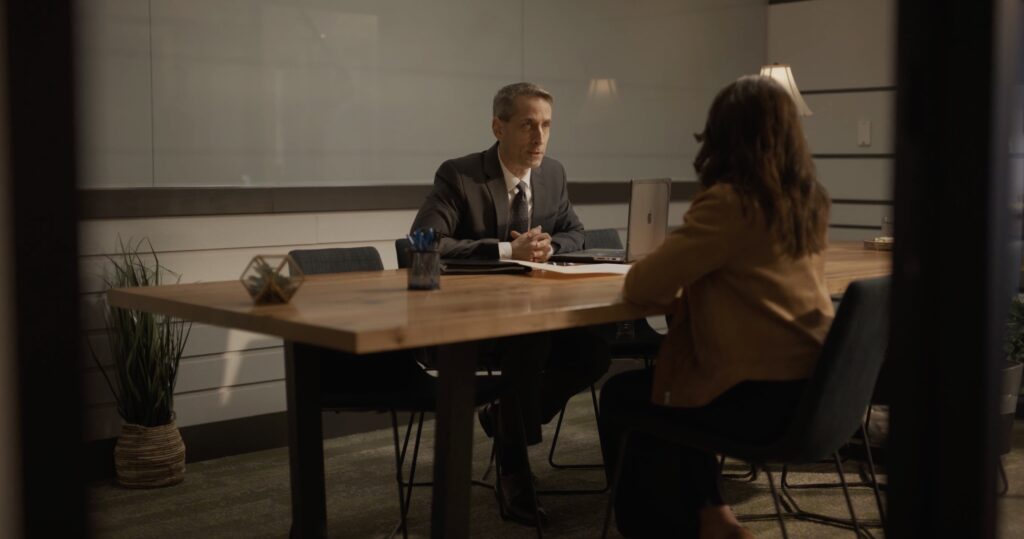
The Psychology of Music in Commercial Video
The style and choice of music can significantly affect the psychology of any commercial film. More time will likely be spent discussing the choice of music than anything else an editor does in preparing the video. Just as in life, music evokes deep emotion, from joy to sorrow, from energy to calm. Regardless of all the psychological work done for your film thus far, music can either nullify all efforts or amplify them. A capable producer will discuss with you what you want your audience to feel and do after watching your video. Regardless of the emotion you desire your brand to evoke, all aspect of video psychology need to be in sync and in harmony with each other. When this is accomplished, you can know that your commercial video will be engaging, effective and able to accomplish your strategic goals.

